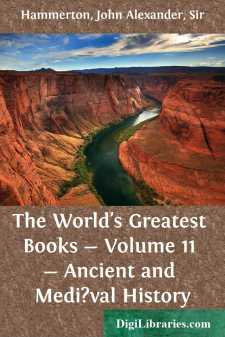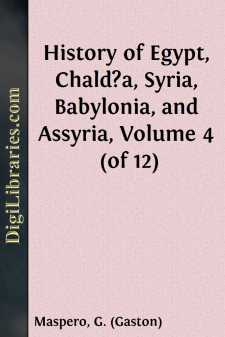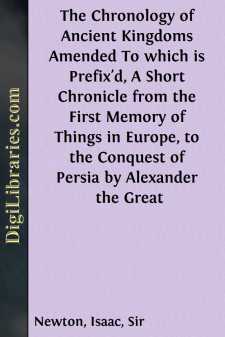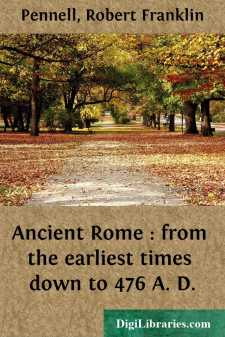History
- Africa 30
- Americas (North Central South West Indies) 50
- Ancient
- Asia 58
- Australia & New Zealand 8
- Canada 41
- Caribbean & West Indies 1
- Civilization 20
- Eastern Europe 12
- Europe 310
- Expeditions & Discoveries 60
- General 77
- Historical Geography 1
- Jewish 9
- Latin America 3
- Medieval 8
- Middle East 13
- Military 248
- Revolutionary 8
- Study & Teaching 5
- United States 353
- Western Europe 56
- World 13
Ancient Books
Sort by:
CHAPTER I—THE ASSYRIAN REVIVAL AND THE STRUGGLE FOR SYRIA Assur-nazir-pal (885-860) and Shalmaneser III. (860-825)—The kingdom of Urartu and its conquering princes: Menuas and Argistis. Assyria was the first to reappear on the scene of action. Less hampered by an ancient past than Egypt and Chaldæa, she was the sooner able to recover her strength after any disastrous crisis, and to assume again...
more...
I.--The Nile and Egypt A long, low, level shore, scarcely rising above the sea, a chain of vaguely defined and ever-shifting lakes and marshes, then the triangular plain beyond, whose apex is thrust thirty leagues into the land--this, the Delta of Egypt, has gradually been acquired from the sea, and is, as it were, the gift of the Nile. Where the Delta ends, Egypt proper begins. It is only a strip of...
more...
Of Ammianus Marcellinus, the writer of the following History, we know very little more than what can be collected from that portion of it which remains to us. From that source we learn that he was a native of Antioch, and a soldier; being one of the prefectores domestici—the body-guard of the emperor, into which none but men of noble birth were admitted. He was on the staff of Ursicinus, whom he...
more...
CHAPTER I THE FIRST CHALDÆAN EMPIRE AND THE HYKSÔS IN EGYPT Syria: the part played by it in the ancient world—Babylon and the first Chaldæan empire—The dominion of the Hyksôs: Âhmosis. Some countries seem destined from their origin to become the battle-fields of the contending nations which environ them. Into such regions, and to their cost, neighbouring peoples come from century to century to...
more...
by:
Sallust
THE ARGUMENT. The Introduction, I.-IV. The character of Catiline, V. Virtues of the ancient Romans, VI.-IX. Degeneracy of their posterity, X.-XIII. Catiline's associates and supporters, and the arts by which he collected them, XIV. His crimes and wretchedness, XV. His tuition of his accomplices, and resolution to subvert the government, XVI. His convocation of the conspirators, and their names,...
more...
by:
Edgar Saltus
THAT WOMAN When the murder was done and the heralds shouted through the thick streets the passing of Caesar, it was the passing of the republic they announced, the foundation of Imperial Rome. There was a hush, then a riot which frightened a senate that frightened the world. Caesar was adored. A man who could give millions away and sup on dry bread was apt to conquer, not provinces alone, but hearts....
more...
by:
Isaac Newton
CHAP. I. Of the Chronology of the First Ages of the Greeks. All Nations, before they began to keep exact accounts of Time, have been prone to raise their Antiquities; and this humour has been promoted, by the Contentions between Nations about their Originals. Herodotus tells us, that the Priests ofEgyptreckoned from the Reign ofMenesto that ofSethon, who putSennacheribto flight, three hundred forty and...
more...
CHAPTER I. GEOGRAPHY OF ITALY. Italy is a long, narrow peninsula in the southern part of Europe, between the 38th and 46th parallels of north latitude. It is 720 miles long from the Alps to its southern extremity, and 330 miles broad in its widest part, i.e. from the Little St. Bernard to the hills north of Trieste. It has an area of nearly 110,000 square miles, about that of the State of Nevada. The...
more...









